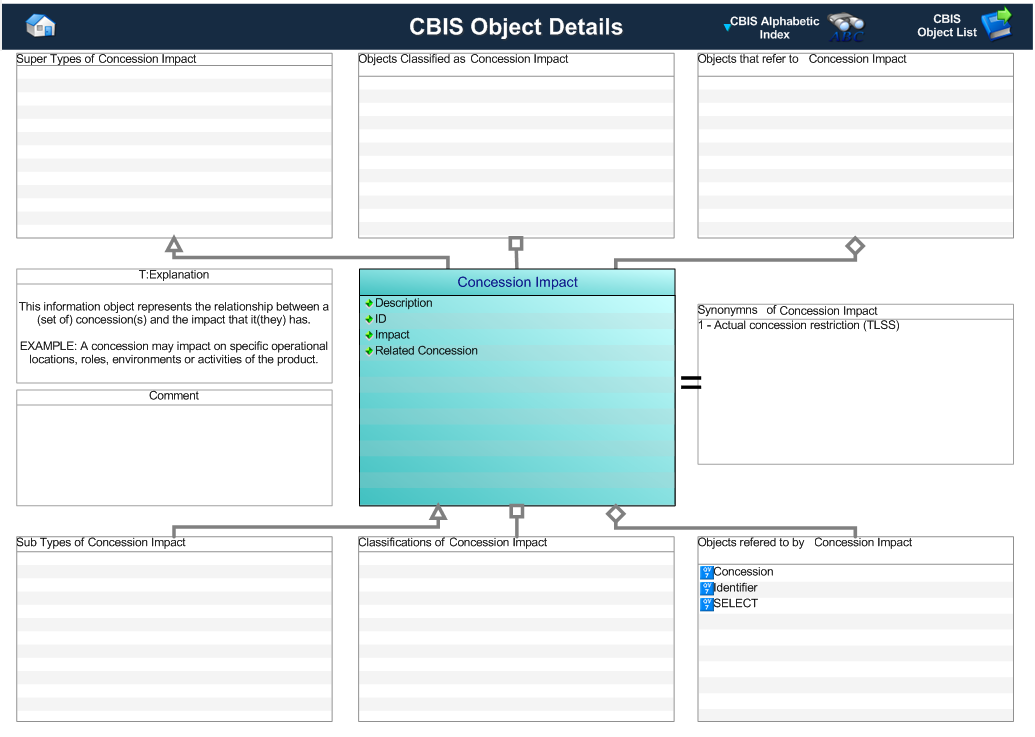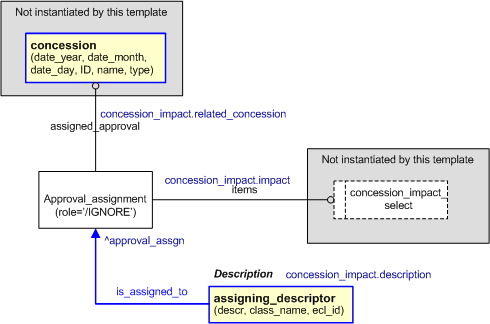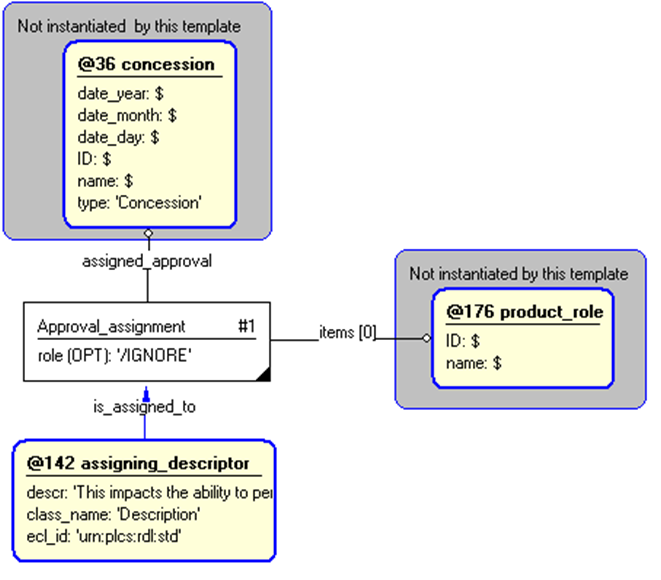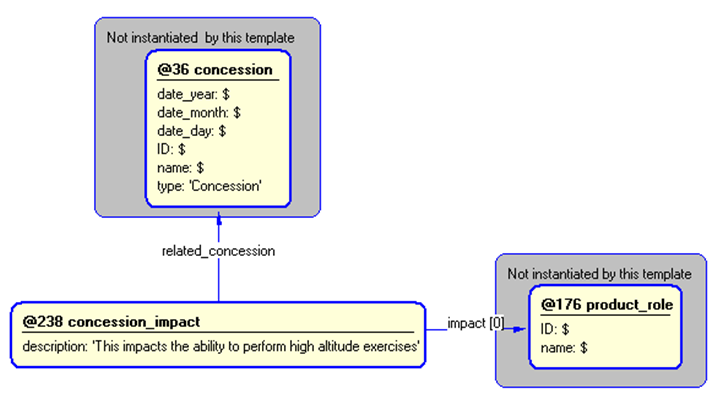Template:— concession_impact (con_impt)
Context:— UK_Defence |
Date: 2009/04/17 10:34:29
Revision: 1.2
|
This section specifies the template concession_impact.
NOTE
The template has been defined in the context of
UK_Defence.
Refer to the business context for details of related templates.
NOTE
An explanation of a template and the associated instantiation path is
provided in the
Template overview
section.
This template describes how to represent a UK_Defence concession impact, using
Approval_assignment.
This information object represents the relationship between a (set of) concession(s) and
the impact that it(they) has.
EXAMPLE: A concession may impact on specific operational roles,
environments or activities of the product.
For further information about the representation of a concession impact, see below.
This information object represents the relationship between a (set of) concession(s) and
the impact that it(they) has.
Figure 1 — Graphical Representation for Business Object concession impact
Record:
This information object represents the information about a physical instance of a Concession Impact.
|
Attribute name
|
Attribute description
|
Attribute type
|
Optionality
|
| Description |
This is the description of the concession restriction. |
Intrinsic |
Mandatory |
| ID |
This is the identifier of the concession restriction. This is removed until issue is addressed |
Identifier |
Mandatory |
| Impact |
This is the reference to the item usage
data which details the concession impact / restriction / applicability. This could
be a Location, Operating Environment, Product Role or Activity.
|
Location, Operating Environment, Product Role or Activity. |
Mandatory |
| Related Concession |
This is the reference to the concession to which the restriction applies. |
Concession |
Mandatory |
Table 1 — Product attribute details
The EXPRESS-G diagram in
Figure
2
shows the templates and EXPRESS entities that are required
to represent the template
"concession_impact".
The text highlighted in blue shows the template parameters.
Figure 2 — An EXPRESS-G representation of the Information model for concession_impact
The graphic for the template to be used in other EXPRESS-G diagrams
is shown in Figure
3
below.
Figure 3 — The graphical representation of the concession_impact template
The following input parameters are defined for this template:
This is the description of the concession restriction.
Identifies that the concession impacts on either an Operating Environment, Product Role or Activity.
This is the reference to the concession to which the restriction applies.
The following reference parameters are defined for this template:
Allow the
Approval_assignment
entity instantiated in this path to be referenced when this template is used.
%^target = $concession_impact.approval_assgn%
The following parameter combinations specify a uniqueness constraint:
Unique constraint: Unique impact
There should be one assignment between each concession, impact and description in a data set.
The instantiation path shown below specifies the entities that are to be
instantiated by the template.
A description of templates and the syntax for the instantiation path is
provided in the
Templates Help/Information section.
The following entities are instantiated with attributes as specified:
The instance diagram in Figure
4
shows an example of the EXPRESS entities and templates that are instantiated by the template:
/concession_impact(description='This impacts the ability to perform high altitude exercises', impact='@176', related_concession='@36')/
(an illustration of the consolidated concession_impact template is shown in
Figure
5 below.)
Figure 4 — Entities instantiated by concession_impact template
The instance diagram in
Figure
5
shows the graphic symbol for the template that is to be
used in other instance diagrams. The example template is:
/concession_impact(description='This impacts the ability to perform high altitude exercises', impact='@176', related_concession='@36')/
Figure 5 — Instantiation of concession_impact template
Characterizations
No common characterizations of the template
concession_impact
have been identified. However, the ISO 10303-239 EXPRESS model
may enable other assignments to the entities instantiated by the template.




